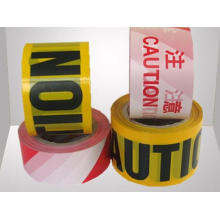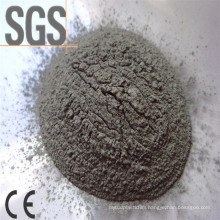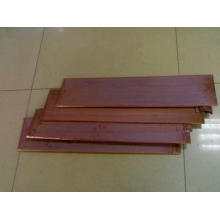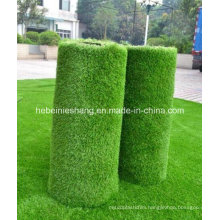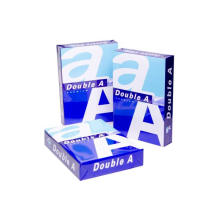In the normal printing process, since the resin in the printing ink system tends to be too long in the final stage of the film formation process, the drying time is delayed (blocking the normal rapid release of the solvent) and directly affects the packaging. The speed of printing, the quality of the pros and cons, in particular, the level of packaging printing efficiency, the production cost. At the same time, it also affects the adhesion performance of the substrate with the substrate, that is, the level of adhesion fastness. Whether the printing ink film can be detached by sticking with sticky tape or not, packaging printers will often use this quality, talk about the price, the failure of this separation and pull will often make the ink maker eye-catching and intimidating. . When printed for some time, such as 3h, 5h, 10h, 24h, 48h (national regulations 48h) can not pull off the ink film to cross the border. As a printer, he will not wait until he can continue printing, compounding, slitting, stacking, stocking, or even packing goods. He needs to have a result in a very short period of time - saying "The actual operation. In this regard, the author through exchanges with a number of packaging and printing companies CEOs and printing operations workers believe that: to overcome the following drawbacks, to take the following method to improve, to meet the current gravure 250-350m/min fast packaging printing requirements.
First, increase the proportion of solvents
It is best to dry the solvent quickly, but it tends to increase the cost of the diluent during the printing process. Before increasing the solvent, it is necessary to consider whether the color density of the ink becomes shallow, that is, the viscosity of the packaging printing ink is not the same under the same solvent conditions. For example, after adding 30% of the solvent, consider its solubility, hydrogen bonding force, volatilization rate balance, surface tension and so on. Generally speaking, from the solvent ratio, the following three recipes have their own merits:
A brief analysis was performed from the above three recipes: Formulation 2 had a high viscosity, Formulation 1 had a moderate viscosity, and Formulation 3 had the lowest viscosity. From the comparison of the two solvents alone: 1 and 2 and 3 drying speeds look the same, but there are still differences. Formulations 1 and 3 have the same volatilization rate, but 3 has a low viscosity and relatively low volatility drying. In terms of cost, the 3 to 1 cost is slightly higher. But the susceptibility and attachment of 3-butanone remained slightly worse than 1. Compared with comprehensive benefits, formula 2 has low cost, high viscosity, good adhesion, low odor and better solubility. However, in the actual package printing process, the solvent volatilization balance at the time of film formation of the ink is better than that of Formulation 1, which is better than 2, 3, since many solvents have the same volatilization rate in terms of conversion, but due to a variety of ) Solvent dilutes the ink to improve the range of printability of the package printing, allowing the printing manufacturer to have a broader range of solvent selection and printing machine speed adjustment surfaces. We have long understood in our many years of practice that the evaporation of a single solvent in a separate package printing operation is caused by the slow evaporation of the solvent in the surface and in the process of forming the ink. When the wet ink film of its printing ink reaches a certain interface strength, it will solidify into a film. The process of forming the ink film for printing and printing also reduces the solvent of the printing ink film that has been volatilized (ran away) in the future, and prolongs the thorough drying time (dryness) of the ink film for packaging and printing. As a result, a phenomenon (failure) occurs after the tape is peeled off from the tape after printing. For this reason, a general printing operator selects a solvent-dilution ink having a small molecular weight (ie, a small viscosity) and a fast film formation for the printing job, and a low-molecular-weight solvent is an overhand method for cutting the silk head of the printing ink.
Second, increase the wax
The purpose of adding wax or enlarging wax is to reduce the above-mentioned consequences caused by the long thread head during the printing process of the ink, and secondly, to solve the problem of the ink system's color, filler agglomeration and ink film hardness, and can effectively improve The thickness of the ink film between the ink and Toyo Ink during the packaging printing process - standing and not sticky (we often say "stand up"). However, too much addition tends to hinder the volatilization of the solvent in the printing ink system, thorough drying and surface crusting, and ink transfer, poor flowability in the transfer printing process, reduction in surface gloss, and the like. It is effective in solving the problems of packaging printing gluing, blocking, and masking. However, overdosing will accelerate the softening of the ink film, causing ink splash problems (because when the printing transfer rubs the ink up).
Third, increase the proportion of pigments and fillers
The increase in solid color and filler is a very simple method for reducing the film formation of packaging printing inks. Its role is to disperse the coating ratio of the resin (competitive adsorption) to prevent the filament from becoming too long. The ultimate goal is to prevent the printing machinery from advancing from slow to fast. The thinning of the film is thickened; trailing and eliminating the edge ghost due to the flow of the ink; the ink is remedied due to poor hiding power.
Fourth, increase the proportion of organic dispersants
Its function is to reduce the shortening of the ink head (viscosity) required for printing due to shearing of the agitated, abraded ink during the ink-making or printing process. However, excessive plasticization (as far as possible not to choose dispersants of plasticizers) dispersants often results in a decrease in the adhesion fastness of composite printing inks and composite glues, or compounding and dry compounding. The TM-3 of Tianyang Chemical Factory is generally added at the time of ink printing or printing, which not only prevents the resin from excessively swelling under the influence of the solvent, but also limits the unrestrained stretch of the resin solution (because of the high molecular resin When pulled by an external force, the curl-stabilized molecules will gradually elongate and stretch. However, as a printer can be added temporarily when using it, do not add plasticizer because it is long, otherwise it will stretch the filament again.
Fifth, adding emulsifiers
The easiest way is to add bentonite or white carbon black. After being sufficiently stirred and dispersed, hydrogen bonds are formed between the silanol groups, resulting in a bulky network structure and thickening of the ink film. The latter tends to cause the ink to swell due to its intervention. When the solvent is added to dilute the printing, the hue of the general printing image becomes lighter due to hairiness.
Six, the choice of resin or mixed skills
Whether it is glue, lead, screen printing, or gravure printing ink in the surface or inside, it is better to select the resin linking material corresponding to the printing machine speed as soon as possible, that is, the faster the speed, the lower the viscosity of the resin and the shorter the wire head. For example, the binder (ie, resin) of the gravure composite printing ink system is formulated with a formula that matches the high chlorine content of CPP or CEVA. We know that the higher the chlorine content, the easier it is to disperse, the lower the viscosity, and the shorter the filament. However, when the packaging ink and the substrate are compounded, the attachment fastness of the ink and the substrate is often directly related. Because the filament of the high-chlorine content resin is short, the crystallization phenomenon of the ink during the printing process is gone. The possibility is also small, the viscosity is low, but the composite fastness is reduced, the stability of the ink in the storage process is also reduced (such as the occurrence of precipitation, foam, etc.), the printed graphics floating color printing process and many more.
Secondly, in order to solve the above problems, usually more than two types of resin inks are used or inks are added during the printing process to overcome them. The one with low viscosity is selected as a tackifier or the chlorine content of the same kind is selected to be small or Low molecular weight (low viscosity) resins are commonly used methods. The purpose of adding silicone oils or dispersants is nothing more than a passive remedy that is based on low filament length or low color concentration. For example, increasing MP-45 with a lower molecular weight or changing from CEVA to EVA has increased the costs of packaging printing inks, although the problems of wire tipping, frost resistance, dispersion, and adhesion have all been improved. . However, if you do not pay much attention, the softening point of the resin in the ink system will be reduced. This will result in sticking due to defects in the printing process during the hot season, or printing in the winter at low temperatures, and will still cause problems in packaging during the hot season. After the stockpiling, the reprinting of the printed graphic is re-plasticized (softened) and scrapping occurs again.
Thirdly, due to the excessive length of the wire, although it adheres very well, the surface of the substrate is too hard for the graphic and ink film of the packaging printing ink to be separated and handled. In fact, when the softening point of the resin is lower than 104°C, blocking or rebonding of the printed product occurs when the room temperature reaches or exceeds 35°C. This refers to packaging printing inks produced from thermoplastic resins, while thermosetting inks present one or more problems during the printing process (such as deformation, splashing of printed ink, etc.). It is very important to increase or pay attention to the selection, grafting, and collocation of the resin in the packaging printing ink system. Secondly, it is the only way to completely avoid the above failures by seriously treating the viscosity or softening point of the test or testing. Very important and necessary.
Note: 1 is composed of xylene 9.6, butyl ester 9, ethyl ester 26.4, toluene 55; 2 is composed of toluene 70, ethyl ester 30; 3 is composed of toluene 63.3, ethyl ketone 26.4.
Information Source: China Coating Network
